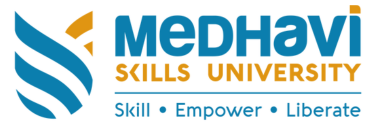1. Introduction: Understanding Human Perceptions of Limitations
Perceived limitations in promotional offers are not merely logistical constraints; they are deeply rooted in human psychology. When companies or marketers impose restrictions—such as limited availability or time-limited offers—they tap into cognitive processes shaped by evolution, culture, and individual experiences. These limitations influence how consumers evaluate value, fairness, and trustworthiness of an offer.
At the core, humans have an innate tendency to interpret constraints through lenses of fairness and scarcity. Scarcity often signals exclusivity or higher value, prompting consumers to act swiftly. Fairness perceptions—how equitable an offer appears—also play a crucial role in decision-making. When limitations are perceived as fair or justified, trust increases, and consumers are more likely to accept or even desire restricted options.
This interplay of perceptions significantly impacts consumer behavior, shaping not only immediate responses but also long-term trust in brands or offers. Recognizing these psychological underpinnings helps explain why restrictions, when strategically designed, can enhance an offer’s appeal rather than diminish it.
Contents
- The Psychology Behind Limitations in Offers
- Cultural and Historical Influences on Perceptions of Limitations
- Modern Examples of Limitations Reflecting Human Perceptions
- Limitations as a Reflection of Human Cognitive Processes
- Non-Obvious Dimensions of Limitations in Offers
- Implications for Designing Effective Free Offers
- Conclusion: Limitations as a Mirror of Human Perception and Behavior
2. The Psychology Behind Limitations in Offers
a. Scarcity effect: Why limited availability increases perceived value
The scarcity effect is a well-documented phenomenon in psychology, where limited resources or options are perceived as more valuable. When an offer is available only for a short period or in limited quantities, consumers often interpret this as an indication of exclusivity or high quality. This drives urgency and motivates quick decision-making, as individuals fear missing out (FOMO).
For example, limited-time offers in e-commerce or flash sales capitalize on this effect, creating a sense of exclusivity that can significantly boost conversions. The principle is so powerful that even when the actual scarcity is artificial, consumers often respond with heightened interest and perceived value.
b. The impact of framing: How limitations shape perceptions of quality and exclusivity
The way limitations are presented (framed) influences consumer perceptions profoundly. For instance, emphasizing the rarity or uniqueness of a deal can elevate its perceived quality, making it seem more desirable. Conversely, framing limitations as a sign of a premium or exclusive experience can enhance trust and prestige.
A historical example includes Victorian-era advertising, which often used ornate borders and elaborate language to suggest luxury and trustworthiness, subtly implying that limited or exclusive offers were backed by tradition and reliability.
c. Cognitive biases involved: Loss aversion and the endowment effect in limited offers
Two key cognitive biases explain why limitations can increase desirability:
- Loss aversion: People prefer avoiding losses more than acquiring equivalent gains. When an offer appears limited, consumers fear losing out, which motivates quicker action.
- Endowment effect: Once individuals perceive an offer or product as limited or exclusive, they tend to value it more highly, feeling a sense of ownership or special connection, which boosts perceived worth.
3. Cultural and Historical Influences on Perceptions of Limitations
a. Nostalgia and framing: Victorian aesthetics (e.g., golden borders) as a symbol of trust and tradition
Historical design elements, such as Victorian-inspired borders and ornate styling, evoke nostalgia and convey a sense of trust and stability. These visual cues suggest that an offer is rooted in tradition, making consumers more comfortable accepting limitations. Such aesthetics often signal quality and exclusivity, reinforcing perceptions that limitations are part of a trusted, time-tested system.
b. Societal attitudes toward luck and fairness: Odd vs. even distributions in games of chance
Societies have long associated luck with specific symbols or distributions—odd or even numbers often carry superstitious connotations. For example, in gambling or lotteries, odd distributions might be perceived as luckier or more unpredictable, influencing how consumers perceive fairness or randomness in offers. These cultural attitudes shape expectations about what is fair or desirable in chance-based scenarios.
c. The influence of natural phenomena: Purple skies during volcanic eruptions as a mirror of societal turbulence
Natural phenomena, like the purple skies during volcanic eruptions, serve as powerful metaphors for societal upheaval or change. Such imagery influences perceptions of chaos, rarity, and the extraordinary. When offers incorporate symbols or analogies from nature—such as rare sky colors—they tap into collective emotional responses, framing limitations as either disruptive or exclusive, depending on context.
4. Modern Examples of Limitations Reflecting Human Perceptions
a. Gaming industry: Rainbow Riches Freespins—how free spins on reels 1, 3, 5 evoke luck and fairness
In the gaming industry, promotional offers like free spins are crafted to resonate with human perceptions of luck and fairness. For instance, free spins on reels 1, 3, and 5 in games such as Rainbow Riches are strategically chosen to evoke a sense of randomness and fairness, aligning with superstitions about lucky numbers and positions. These limitations—restricted to specific reels—are perceived as fair, as they mimic natural chance and give players a feeling of controlled luck. This approach enhances engagement and trust, especially when the game mechanics mirror societal superstitions about luck.
To explore such offers, visit payouts that feel generous.
b. Marketing strategies: Limited-time offers and their psychological appeal
Limited-time offers leverage the scarcity effect and framing to create urgency. Retailers and service providers often set short windows for discounts or bonuses, which amplifies perceived value and motivates quick decisions. This tactic is rooted in understanding that consumers often associate scarcity with exclusivity and quality, thus increasing the likelihood of engagement.
c. Digital environments: Algorithmic restrictions and user perceptions of fairness and transparency
In digital platforms, algorithmic restrictions—such as limited content visibility or access controls—shape user perceptions. When transparency about these limitations is communicated effectively, users tend to accept restrictions as fair, fostering trust. Conversely, opaque restrictions may lead to suspicion or frustration, highlighting the importance of framing limitations positively.
5. Limitations as a Reflection of Human Cognitive Processes
a. How humans interpret constraints based on past experiences and cultural cues
Humans interpret limitations through the lens of their personal history and cultural background. For example, societies with long-standing traditions of craftsmanship may view restrictions as indicators of quality, while others might see them as barriers. Past experiences with scarcity or abundance influence expectations, making some consumers more receptive to restrictions than others.
b. The role of perceived control and predictability in accepting limitations
Perceived control over an offer—such as clear rules or predictable restrictions—enhances acceptance. When limitations are transparent and consistent, consumers feel more confident that the constraints are fair, reducing frustration and increasing trust. Unpredictable or opaque limitations, however, can trigger suspicion or rejection.
c. The paradox: why restrictions often increase desirability even when they limit options
Despite seeming counterintuitive, restrictions often enhance desirability due to psychological biases like loss aversion and the endowment effect. Limiting options makes each remaining choice seem more valuable, and the fear of missing out intensifies demand. This paradox is a strategic tool in marketing, transforming limitations from barriers into catalysts of desire.
6. Non-Obvious Dimensions of Limitations in Offers
a. The aesthetic symbolism: Victorian-inspired borders as a nostalgic framing device
Design elements like Victorian-inspired borders serve as aesthetic symbols that evoke nostalgia and trust. These visual cues suggest an association with tradition, quality, and reliability, subtly reinforcing that limitations are part of a trusted heritage. Such stylistic choices can make restrictions seem more acceptable, even desirable.
b. Environmental analogies: Purple skies during eruptions as a metaphor for financial or societal upheaval
Analogies drawn from natural phenomena, such as purple skies during volcanic eruptions, symbolize societal turbulence or rarity. Incorporating these metaphors into marketing or offer design frames limitations as extraordinary or transformative, heightening their perceived significance and emotional impact.
c. The design of game mechanics: Lucky number distributions (odd vs. even) as a reflection of human superstitions
Game mechanics often embed superstitions, such as the preference for odd or even numbers, to influence perceptions of luck and fairness. Distributing chances or rewards based on these patterns taps into collective beliefs, making the limitations feel more aligned with cultural notions of luck, thus increasing their acceptance.
7. Implications for Designing Effective Free Offers
a. Balancing limitations to foster trust without creating frustration
Effective design requires a delicate balance: imposing enough limitations to create perceived value, but not so much that users feel restricted or manipulated. Transparency about restrictions and aligning them with perceived fairness help build trust and encourage engagement.
b. Leveraging cultural symbols and natural analogies to enhance perceived value
Incorporating culturally resonant symbols—like Victorian aesthetics—or natural analogies enhances the emotional connection and perceived authenticity of offers. These elements tap into deep-seated beliefs and feelings, making limitations seem more meaningful and trustworthy.
c. Ethical considerations: Transparency and authenticity in setting limitations
While limitations can boost desirability, ethical practices demand transparency. Misleading consumers about restrictions undermines trust and damages brand reputation. Honest communication about limitations and their purpose fosters long-term loyalty.
8. Conclusion: Limitations as a Mirror of Human Perception and Behavior
Throughout history and across cultures, limitations in offers serve as reflections of human perceptions—shaped by psychology, tradition, and societal norms. Recognizing this helps marketers and designers craft offers that resonate deeply, leveraging innate biases and cultural cues to foster trust and increase engagement.
“Constraints, when thoughtfully designed, become powerful tools that align with human perceptions, transforming limitations from barriers into bridges of trust.”
In essence, embracing limitations—not as obstacles but as strategic elements—allows for the creation of compelling, authentic offers that resonate on a psychological level, ultimately building stronger relationships with consumers.






